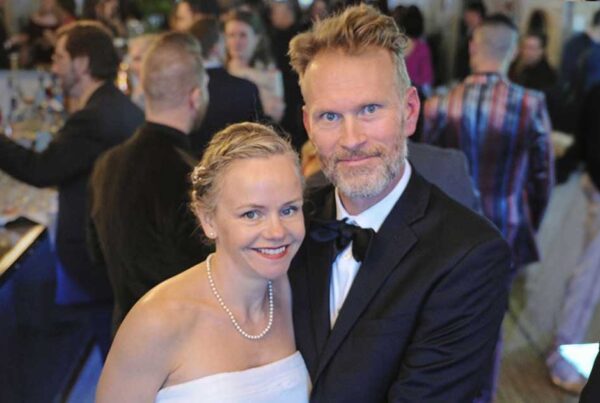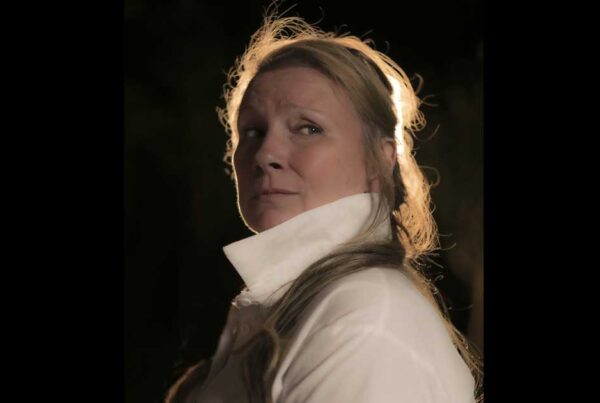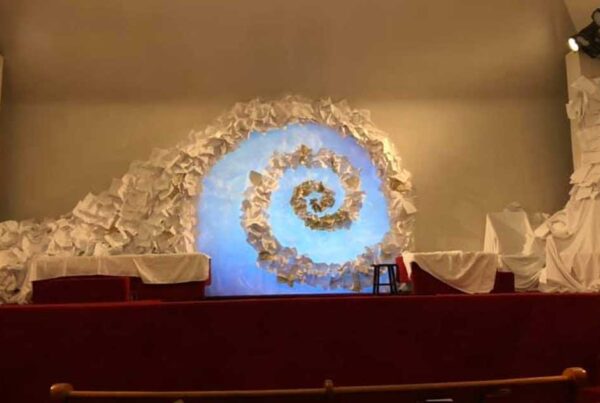
Pittsburgh Post-Gazette – Of Shakespeare there is no end. His plays, poems and a legacy of over 400 years have fed a voracious industry of scholarship, production, adaptation, revisionism and plain guesswork. And there’s also his life — colleagues, family, lovers, and did he actually write his plays? — and, oh yes, his wife.
Anne Hathaway Shakespeare is nowadays a focus of speculation, one product of which is Vern Thiessen’s 2005 play, “Shakespeare’s Will,” now staged by Quantum Theatre.
Here we meet Anne, the real woman who married Will when he was 18 and she was 26, bore him three children, oversaw his property in Stratford and outlived him at the end.
The play takes place on the day of Will’s funeral, April 25, 1616 (its actual date), as Anne recounts memories of their life together, or rather, mainly apart, because she lived in Stratford while he earned his living and fame three days travel away in London.
But be of good cheer: “Shakespeare’s Will” is not a docudrama carved out of research, nor even an angry plea for the ignored spouse, but something better. Mr. Thiessen’s play is a rich tone poem, a dance, a fable, a fictional memoir given interest by its connection to the historic Anne and Will but unfettered by biographical fact.
And in production by Quantum, directed by Melanie Dryer, in an intimate space, with the walls blown open by the enhancing projections of Joe Seamans and music of Dawn Posey, “Shakespeare’s Will” comes richly alive. As performed by Sheila McKenna, it is a robust poetic tale, combining dream and nightmare.
The framework is Will’s famous last will and testament in which he infamously left Anne his “second best bed.” Anne has put off reading it, but her sister-in-law has already hinted she won’t like it; confronting it will provide the play’s eventual climax. Meantime, Anne relives their life. Among Thiessen’s inventions I particularly like their meeting as mutual pick-ups at a country fair, leading quickly to the pregnancy that forced their marriage.
Anne is obsessed with the sea. It’s a rainy day and her first words are “I long for the sea.” She inherited this love from her father; she uses it as a metaphor for life and love, and she escapes with children and servants to the seaside when the plague rages. More happens there than she wants to say.
Remember, this is all to a large degree fanciful. Don’t try to arrange it on the timeline of Anne’s actual life. Free yourself (I had to tell myself) from fact to take this emotional, self-dramatizing journey with Thiessen’s Anne, Dryer’s Anne, but most compellingly, McKenna’s Anne. She is self-conscious and static to start, under the pressure of the funeral. But she grows more fluid, set free by the text, which appears on the page as short-lined free verse, allowing the actor to provide punctuation, which is to say rhythm and even meaning.
It is unclear whom Anne addresses: now her dead husband, now the ear of history, sometimes us and mostly herself. McKenna revels in this mix of memory and perhaps illusion; she swims in it; she dances. Along her way she meets just two others: the silent figure of their dead son, Hamnet (Simon Nigam), and an expressive violinist (Posey), whose supple music and presence provide companionship and counterpoint.
McKenna is an inventive character actor, but that shows up here only in a juicy comic portrait of her father. The play is too fond of its poetry to indulge us with more cameos — I wish it did. It prefers lyric, lament and elegy, lifted by the violin and embraced by Seamans’ projections of sky, nature, London circa 1600 and, most gloriously, the voluminous sea, ranging from smiling to deadly.
The site, always a feature of Quantum productions, is the tiny West Homestead United Methodist Church, seating about 100 in cushioned pews. Stephanie Mayer-Staley has created a high platform on which the all-white Shakespeare house includes sheeted-furniture (a reference to its coming disposition?), with pages of manuscript cascading around. Towering on the rear wall is a translucent, sculptural whorl, like a giant mollusk or spiral jetty seen from above, brought beautifully alive by the projections and by C. Todd Brown’s lights. Enriching the design further is Steve Shapiro’s soundscape of animal, sea and sky.
The play makes clear that Anne was oppressed by patriarchy and her absent husband, whose “will” (i.e. determination) confined her to Stratford. Agreed. But his written will’s disposition of the house, which Thiessen fictionalizes with sleight of hand, seems added just for the sake of an ersatz emotional climax.
Never mind. Under Dryer’s sensitive direction, nothing seems random but much is fittingly left to individual response. This poetic fable is set free from the reality that suggested it, given life by inspired performance and design.




